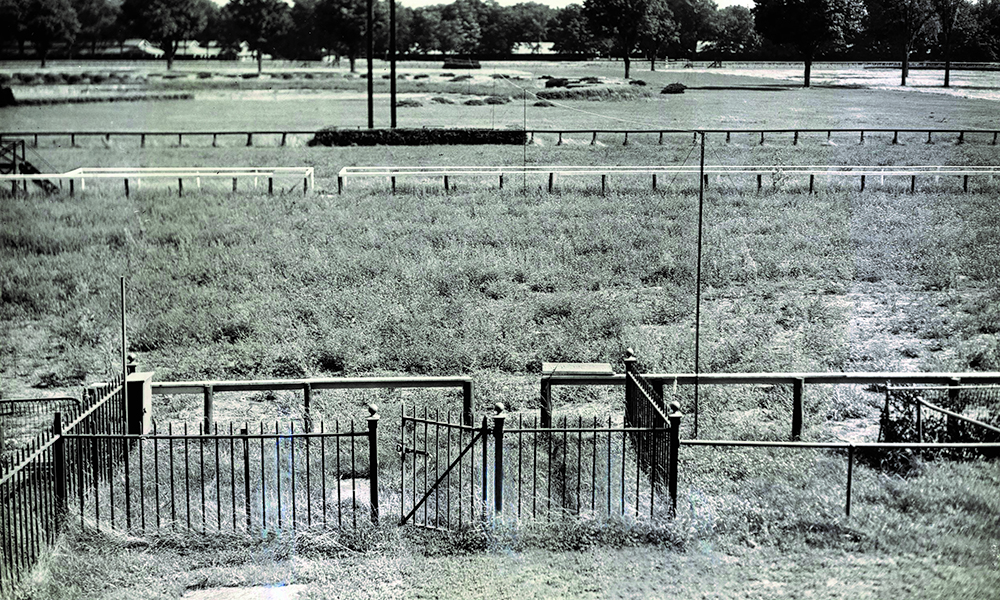Barring an unexpected turn of events, the gates at Saratoga Race Course are scheduled to be closed to the public this summer due to the COVID-19 pandemic. Spectators or not, though, there will still be live racing at the Spa beginning on July 16, stretching all the way to September 7.
But you might be surprised to learn that there were six summers in the track’s 156-year history when the track saw not a single race run. (In other words, somebody had it off a lot worse than you did.) Since organized racing debuted in Saratoga during the Civil War, with the track opening in 1864, various circumstances have led to it being shuttered. Here are the six times Saratoga’s summer went completely dark.
1896: The dark summer of 1896 was in large part the result of rancor toward the track’s management, which eventually led to a downswing in race dates offered by The Jockey Club. The 1890s were unquestionably the worst period in Saratoga’s racing annals. Beginning in 1892, the notorious Gottfried Walbaum was in charge, and his leadership led to a rapid decline in the prosperity and reputation of the track. Many of Saratoga’s established stakes races were either dropped from the schedule or had their purses significantly reduced. Walbaum’s favoring of cheaper races led to many of the sport’s most distinguished stables avoiding Saratoga entirely. Also, there was rampant speculation that races were being fixed. For example, there was much conjecture about the legitimacy of the results during a day in 1895 when horses owned by Walbaum won the first four races on a card. Walbaum also angered Saratogians by tinkering with the race times and drew the ire of downtown merchants by adding services at the track that competed with their livelihood, including a barber shop and a printing press. Things got so bad during 1895 that the track closed after 28 days instead of the scheduled 40. According to The New York Times, attendance was a paltry 400 on August 5. It was announced on Closing Day, August 23, that there would be no racing at Saratoga in 1896. Walbaum and his associates rejected the dates proposed by The Jockey Club, stating that there weren’t enough exclusive to Saratoga. The track reopened in 1897, with Walbaum in a reduced role, and three years later, William Collins Whitney led a partnership group that purchased and revitalized the track and restored its reputation.

1911-12: The track was again shuttered in 1911 and 1912. New York Governor Charles Hughes spearheaded an anti-gambling crusade that resulted in the Hart-Agnew Law and eventually the Executive Liability Act, which eliminated any form of betting and effectively shut down New York racing. In October 1912, a decision by a State Supreme Court justice led to racing’s return. Judge Townsend Scudder of Nassau County ruled that the liability law could not be enforced, paving the way for the return of bookmakers and racing in 1913.
1943-45: After the 1912 season, Saratoga racing went on uninterrupted until World War II, when travel restrictions forced the track’s dates to be shifted to Belmont Park from 1943-45. Saratoga’s mayor at the time, Addison Mallery, fought for the local track to retain the race dates, arguing that Saratogians could walk to the races and that there would be ample local support for a summer meeting. While his efforts to open the track during the war were in vain, racing did finally return to Saratoga on August 5, 1946, with a crowd of more than 15,000 on hand for the sport’s triumphant return.


